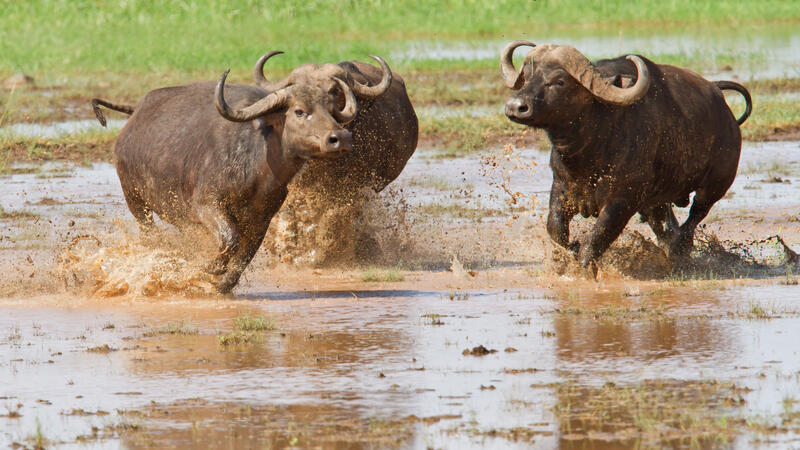A Serengeti-Ngorongoro safari offers an incredible opportunity to witness two of Africa’s most iconic and contrasting wildlife destinations. Here’s an overview of what you can expect:
Serengeti National Park (Tanzania): The Endless Plains
- Vast Savannah: The Serengeti is famous for its seemingly endless rolling plains, dotted with acacia trees and kopjes (rocky outcrops). The Maasai name “Siringit” means “endless plains,” perfectly describing this landscape.
- The Great Migration: This is the Serengeti’s most spectacular event, where millions of wildebeest, accompanied by zebras and gazelles, undertake a cyclical annual migration in search of fresh grazing. The timing varies, but it typically occurs between July and October with river crossings being a major highlight.
- High Predator Density: The abundant herbivores support a large population of predators, including lions (often seen in prides), leopards (more solitary and elusive), cheetahs (well-adapted to the open plains), hyenas, and wild dogs.
- Big Five Encounters: The Serengeti offers excellent chances to spot all of the “Big Five”: lion, leopard, elephant, rhino (both black and white, though black rhinos can be harder to find), and buffalo.
- Diverse Ecosystems: Beyond the plains, you’ll find riverine forests, woodlands, and kopjes, each supporting a variety of flora and fauna.
- Activities: Common activities include game drives, hot air balloon safaris for a breathtaking aerial view, guided walks, and cultural visits to Maasai villages bordering the park.
Ngorongoro Crater (Tanzania): Africa’s Garden of Eden
- World’s Largest Intact Caldera: The Ngorongoro Crater is a massive, unbroken, and unflooded volcanic caldera, roughly 12 miles across and 2,000 feet deep. It’s a natural wonder teeming with wildlife.
- Self-Contained Ecosystem: The crater floor forms a unique ecosystem that supports a remarkably high density of animals year-round. Due to the crater walls, many animals are resident and don’t migrate out.
- Exceptional Wildlife Viewing: The concentration of wildlife is astounding, offering perhaps the best chance in East Africa to see all of the “Big Five” in a single day. Black rhinos are particularly well-protected and relatively easier to spot here compared to the Serengeti.
- Predator Paradise: Lions, hyenas, and cheetahs are abundant, and leopard sightings are also frequent within the crater.
- Lake Magadi: A soda lake on the crater floor often attracts flocks of flamingos, adding a splash of pink to the landscape.
- No Giraffes: Interestingly, giraffes are generally not found within the crater due to the steep descent and lack of their preferred acacia woodlands on the crater floor.
- Activities: Game drives are the primary activity, offering incredible photographic opportunities. Visits to Maasai villages in the Ngorongoro Conservation Area are also popular.
The Safari Experience:
Combining the Serengeti and Ngorongoro offers a contrasting yet complementary safari experience:
- Scale: The Serengeti provides a sense of vastness and the drama of the open plains and the Great Migration. The Ngorongoro Crater offers a more intimate and concentrated wildlife experience within a defined and dramatic landscape.
- Wildlife Density: While both parks boast incredible wildlife, the Ngorongoro Crater is known for its particularly high density of animals in a smaller area, making sightings very rewarding.
- Landscape: The endless plains of the Serengeti contrast sharply with the dramatic walls and enclosed ecosystem of the Ngorongoro Crater.
- Migration: If your timing is right, the Serengeti offers the unparalleled spectacle of the Great Migration, while the Ngorongoro provides consistent year-round wildlife viewing.
A typical Serengeti-Ngorongoro safari itinerary will involve spending several days exploring the vastness of the Serengeti and then moving to the Ngorongoro Conservation Area for a day or two to experience the unique beauty and wildlife of the crater. This combination provides a truly comprehensive and unforgettable East African safari adventure.


